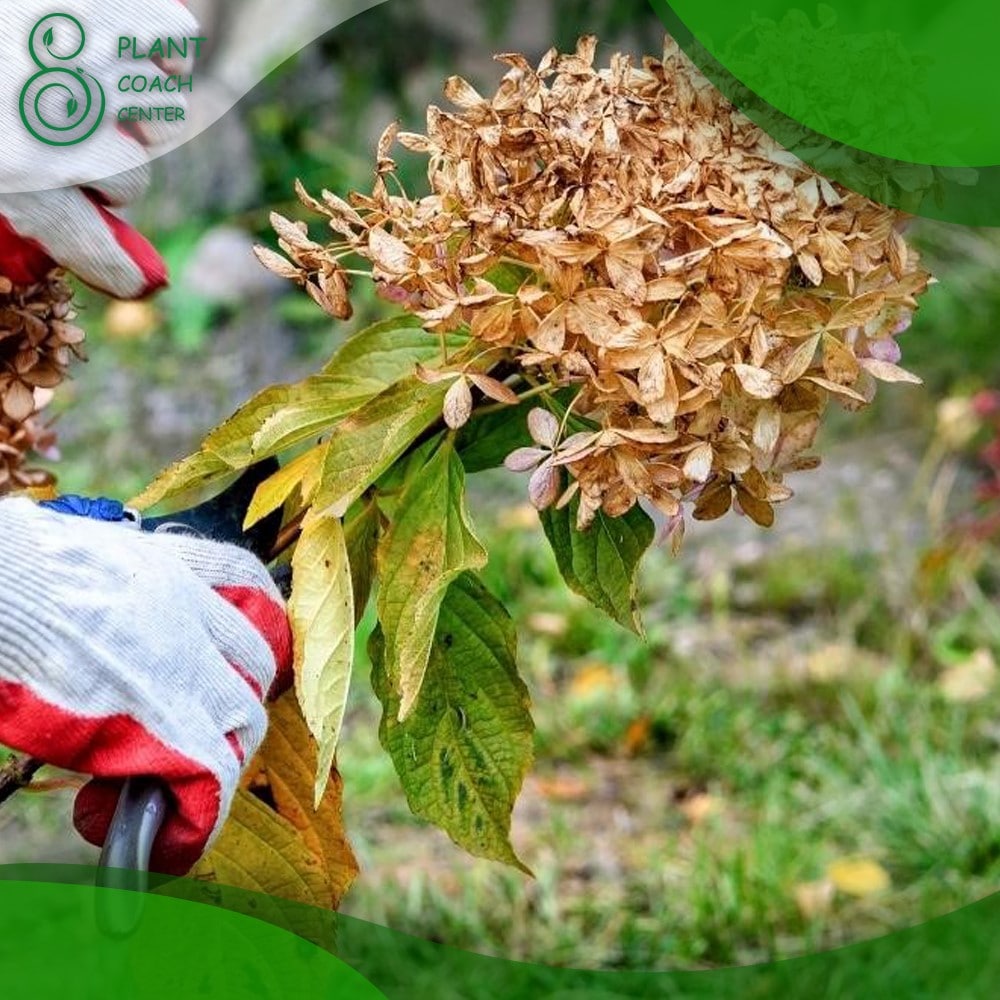Introduction to When to Prune Mophead Hydrangeas
Mophead hydrangeas (Hydrangea macrophylla) are popular flowering shrubs known for their stunning, large, and showy flower clusters. These hydrangeas are beloved for their ability to create a vibrant and colorful display in gardens and landscapes. One of the key aspects of caring for mophead hydrangeas is understanding when and how to prune them effectively.
Proper pruning plays a crucial role in maintaining their health, promoting optimal growth, and ensuring abundant blooms year after year. In this comprehensive guide, we will explore the various aspects of pruning mophead hydrangeas, including the best techniques, timing, potential challenges, and advanced care tips. Whether you are a beginner or an experienced gardener, this article will provide you with valuable insights and practical advice to help you master the art of pruning mophead hydrangeas.
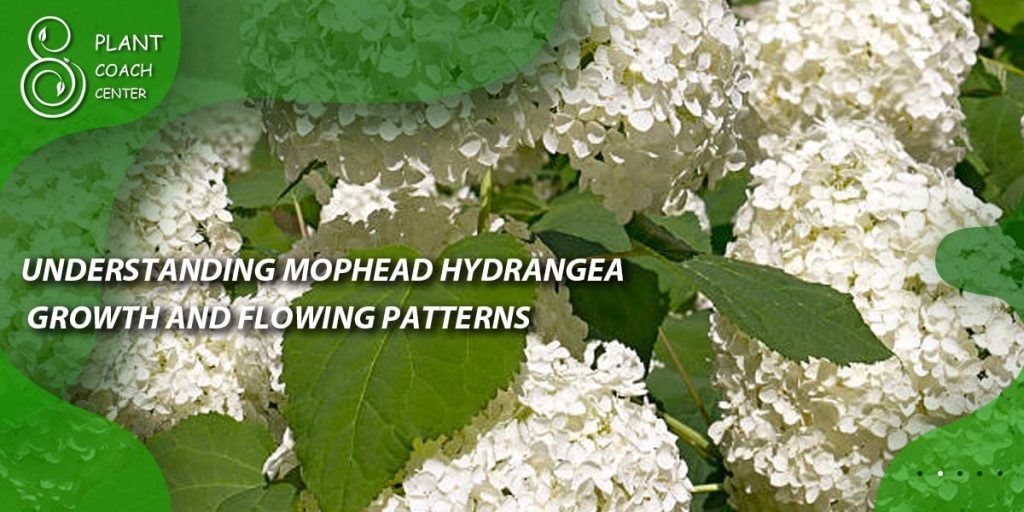
Understanding Mophead Hydrangea Growth and Flowering Patterns
Mophead hydrangeas have unique growth habits and flowering patterns that need to be understood to make informed pruning decisions. Let’s delve into the key aspects of their growth and blooming:
Growth Habit and Structure of Mophead Hydrangeas
Mophead hydrangeas typically grow as deciduous shrubs and can reach a height and width of 3 to 6 feet. They have large, dense clusters of flowers that resemble pom-poms or mopheads, hence their name. Understanding their growth structure is crucial for determining the appropriate pruning techniques.
Flowering Mechanism and Blooming Seasons
Mophead hydrangeas bloom on old wood, which means they develop flower buds during the previous growing season. It’s important to consider this blooming mechanism when deciding on the timing and extent of pruning. The blooming seasons can vary depending on the specific cultivar and climate conditions.
Factors Affecting Flowering and Growth
Several factors can influence the flowering and growth of mophead hydrangeas. These factors include light exposure, soil conditions, temperature, and pruning practices. By understanding these factors, you can make informed decisions about pruning and ensure optimal blooming and growth.
The Pruning Basics: Why, When, and How
Before we dive into the specifics of pruning mophead hydrangeas, let’s explore the fundamental aspects of pruning, including the reasons behind pruning, the appropriate timing, and the essential techniques to employ.
Importance of Pruning for Mophead Hydrangeas
Pruning plays a vital role in maintaining the health, shape, and size of mophead hydrangeas. By selectively removing branches and stems, pruning helps promote airflow, sunlight penetration, and overall plant vigor. It also encourages the development of new growth and stimulates the formation of flower buds.
Benefits of Proper Pruning Techniques
When done correctly, pruning offers several benefits for mophead hydrangeas. These include:
– Enhanced flower production: Removing spent blooms and selectively pruning branches allows the plant to focus its energy on producing new flower buds, resulting in more abundant blooms.
– Improved plant aesthetics: Pruning helps maintain a desirable shape, prevent overcrowding, and create a more visually pleasing appearance for your hydrangeas.
– Control of size and structure: With regular pruning, you can manage the size of your mophead hydrangeas, prevent them from becoming overgrown, and promote a well-balanced structure.
– Healthier plants: Pruning removes dead, damaged, or diseased branches, reducing the risk of pests and diseases and promoting overall plant health.
Factors to Consider Before Pruning
Before you grab your pruners, there are a few essential factors to consider:
– Specific cultivar: Different mophead hydrangea cultivars may have varying growth habits and pruning requirements. Research the specific characteristics of your cultivar to ensure you prune it appropriately.
– Blooming season: Understanding the blooming season of your mophead hydrangeas is crucial for determining the best time to prune. Pruning at the wrong time may result in the loss of flower buds and reduced blooming.
– Climate considerations: The climate in your region can influence the timing of pruning. Cold-winter regions and warmer climates may require adjustments in pruning techniques and timing.
Tools and Equipment for Pruning
Having the right tools and equipment is essential for effective and precise pruning. Here are some tools commonly used for pruning mophead hydrangeas:
– Pruning shears: Sharp, bypass pruners are ideal for making clean cuts without crushing plant tissues.
– Loppers: For thicker branches, loppers with long handles provide the necessary leverage and cutting power.
– Hand saw: A hand saw can be useful for removing larger branches or shaping the overall structure of the plant.
– Gloves and safety glasses: Protecting your hands and eyes is important when handling sharp tools and working around thorny branches.
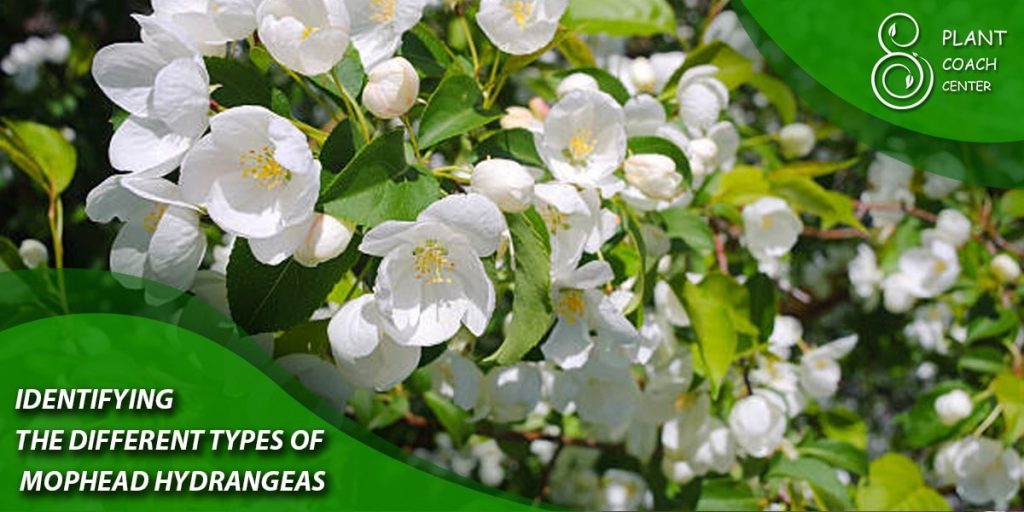
Identifying the Different Types of Mophead Hydrangeas
Before diving into the specifics of pruning, it’s crucial to have a clear understanding of the different type of mophead hydrangeas. While they all belong to the Hydrangea macrophylla species, there are distinct cultivars and variations within this category. Let’s explore some common types and their growth characteristics:
Common Varieties of Mophead Hydrangeas
- ‘Endless Summer’: This popular cultivar is known for its ability to bloom on both old and new wood, providing extended flowering periods.
- ‘Nikko Blue’: A classic mophead hydrangea with large, vibrant blue flowers that thrive in acidic soil.
- ‘Forever Pink’: This cultivar produces large, pink blooms and is known for its exceptional color retention.
Distinctive Features and Growth Characteristics
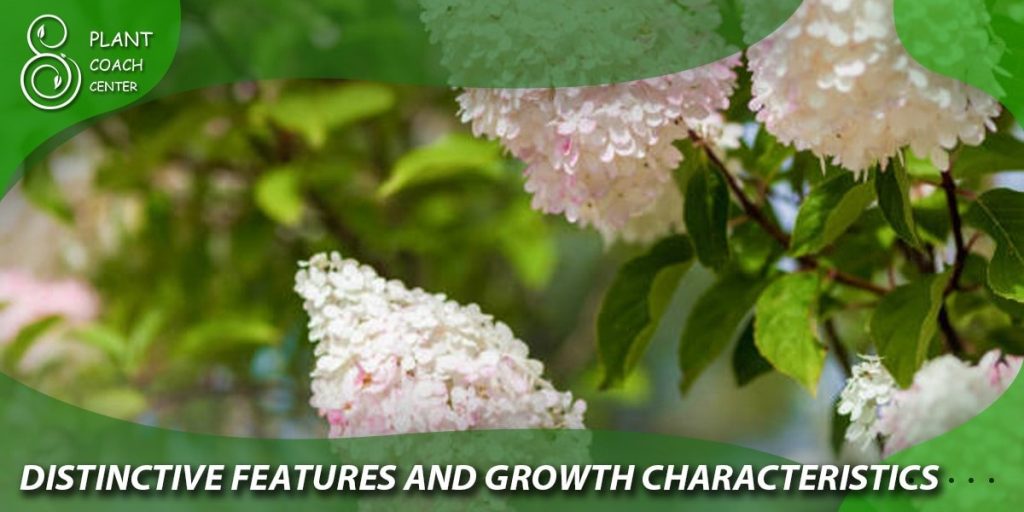
Each mophead hydrangea cultivar has its own unique features and growth habits. Consider the following:
– Flower color: Mophead hydrangeas can produce blooms in various colors, including blue, pink, purple, and white. The flower color may be influenced by soil pH and the presence of aluminum ions.
– Size and growth rate: Hydrangea cultivars can vary in size, with some reaching heights of 3 to 6 feet and others staying more compact. Understanding the growth rate helps in planning for pruning and maintenance.
– Sun and shade preferences: Some mophead hydrangeas thrive in full sun, while others prefer partial shade. Knowing the specific light requirements of your cultivar ensures optimal growth and blooming.
Seasonal Pruning: Pruning Mophead Hydrangeas Throughout the Year
To ensure the best results when pruning mophead hydrangeas, it’s important to consider the different seasons and their specific pruning requirements. Let’s explore the recommended pruning practices for each season.
Spring Pruning: Preparing for the Blooming Season
In early spring, as new growth emerges, it’s an ideal time to prepare mophead hydrangeas for the upcoming blooming season. Follow these guidelines for spring pruning:
- Remove dead and damaged wood: Carefully inspect the hydrangea for any dead or damaged branches, and prune them back to healthy tissue.
- Cut back old flower heads: If you left the spent flower heads intact during winter, now is the time to remove them. Cut just above the first set of healthy buds to encourage new growth.
- Thin out overcrowded stems: If your hydrangea has become dense and crowded, selectively remove some of the older, weaker stems to improve airflow and light penetration.
Summer Pruning: Maintaining Shape and Size
During the summer months, your mophead hydrangeas are in full bloom. While minimal pruning is recommended during this time, some light maintenance can help keep them looking their best. Consider the following:
- Deadhead spent blooms: Regular deadheading not only keeps your hydrangeas looking tidy but also redirects energy towards the development of new flower buds.
- Control size and shape: If your mophead hydrangea is growing too vigorously or spreading beyond its desired boundaries, selectively prune back some of the longest branches to maintain the desired size and shape.
- Address diseased or damaged branches: If you notice any signs of disease or damage, such as discoloration or wilting, promptly remove the affected branches to prevent further spreading.
Fall Pruning: Preparing for Winter and Next Year’s Blooms
As fall approaches and your mophead hydrangeas start to wind down their blooming cycle, it’s time to prepare them for winter and encourage healthy growth for the following year. Follow these fall pruning tips:
- Remove spent blooms: Trim off any remaining blooms that have faded or dried out. Cut just above a healthy set of buds or leaf nodes.
- Assess structural integrity: Take this opportunity to evaluate the overall structure of your hydrangea. Remove any weak, crossing, or crowded branches to enhance the plant’s strength and appearance.
- Inspect for pests or diseases: Thoroughly inspect your hydrangeas for any signs of pests or diseases. If detected, take appropriate measures to address the issue before winter arrives.
Winter Pruning: Assessing and Correcting Structural Issues
Winter is generally not the preferred time for extensive pruning of mophead hydrangeas, but it can be a suitable period for addressing certain structural issues. Keep the following considerations in mind:
- Prune for structural integrity: If you notice any significant structural issues, such as branches that are crossing, rubbing against each other, or growing in undesirable directions, you can selectively prune to correct these problems. However, avoid extensive pruning during this time, as it may remove flower buds for the following season.
- Protect against winter damage: Before the onset of freezing temperatures, consider providing winter protection for your mophead hydrangeas. Applying a layer of mulch around the base of the plant can help insulate the roots and protect against temperature fluctuations.
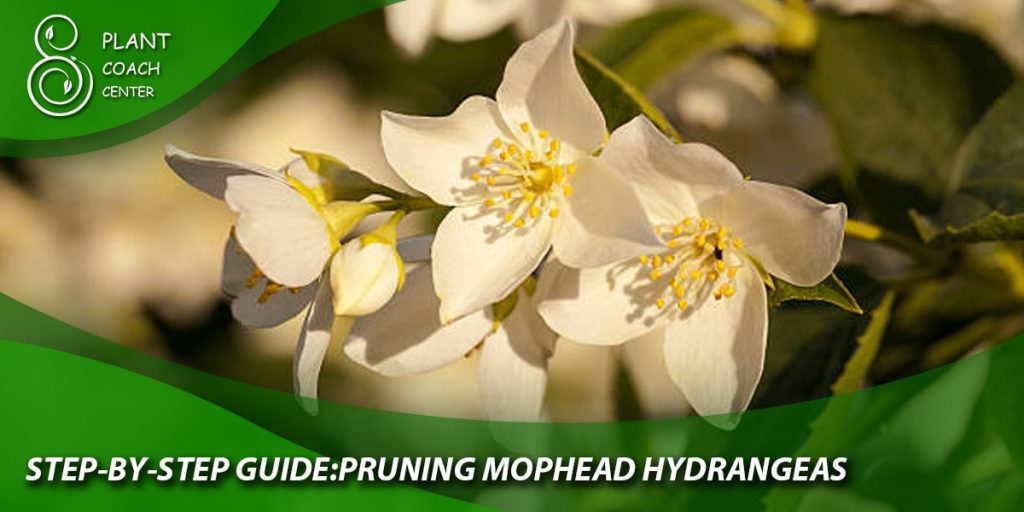
Step-by-Step Guide: Pruning Mophead Hydrangeas
Now that you understand the seasonal approach to pruning mophead hydrangeas, let’s dive into a step-by-step guide to help you master the pruning process. Follow these instructions to ensure effective and precise pruning:
- Gather the necessary tools and equipment: Before you begin, make sure you have sharp pruning shears, loppers, a hand saw (if needed), gloves, and safety glasses.
- Identify the appropriate time for pruning: Depending on your specific mophead hydrangea cultivar and your climate zone, determine the optimal time for pruning—whether it’s in spring, summer, fall, or winter.
- Evaluate the plant’s structure: Take a close look at your hydrangea’s overall structure. Identify any dead, damaged, or diseased branches, as well as any crossing or crowded growth that might impede airflow and light penetration.
- Remove dead and damaged wood: Using your pruning shears or loppers, carefully prune back dead or damaged branches to healthy tissue. Make clean cuts just above a bud or leaf node.
- Deadhead spent blooms: To encourage new growth and potential reblooming, remove the faded or dried-out flower heads. Cut just above a healthy set of buds or leaf nodes.
- Thin out overcrowded stems: If your mophead hydrangea has become dense and crowded, selectively remove some of the overlapping or weaker stems. This improves airflow and light penetration, promoting overall plant health.
- Shape and control size (if necessary): If your hydrangea is growing too vigorously or spreading beyond its desired boundaries, selectively prune back some of the longest branches. This helps maintain the desired size and shape of the plant.
- Make clean cuts: When pruning, always use sharp tools to make clean cuts. Avoid crushing or tearing the plant tissues, as this can lead to unnecessary damage and potential disease entry points.
- Dispose of pruned material: Collect and dispose of the pruned branches and debris properly. Do not leave them in your garden, as they may harbor pests or diseases.
- Monitor and provide aftercare: After pruning, monitor your mophead hydrangeas for any signs of stress or potential issues. Provide appropriate aftercare, such as regular watering, mulching, and fertilization, to support their recovery and future growth.
Advanced Tips for Pruning Mophead Hydrangeas
Once you have mastered the basics of pruning mophead hydrangeas, you can consider applying some advanced techniques to further enhance their growth and blooming potential. Here are a few additional tips to consider:
- Rejuvenation pruning: Every few years, you can perform a more extensive rejuvenation pruning to invigorate older or overgrown mophead hydrangeas. This involves cutting the entire plant back to about 6 to 12 inches above the ground in early spring. While this may result in the loss of blooms for a season, it helps promote vigorous new growth and improved flowering in subsequent years.
- Adjusting soil pH: Mophead hydrangeas are known for their ability to change flower color based on soil pH. If you desire blue flowers, ensure the soil is acidic (pH below 7) by incorporating amendments like sulfur or aluminum sulfate. For pink flowers, maintain a slightly alkaline soil (pH above 7) by adding lime. Adjusting soil pH can be done separately from pruning but can impact the overall appearance of your hydrangeas.
- Mulching and watering: Apply a layer of organic mulch around the base of your hydrangeas to conserve moisture, suppress weeds, and regulate soil temperature. Additionally, provide adequate watering during dry periods to keep the plants adequately hydrated.
- Fertilization: Mophead hydrangeas benefit from regular fertilization to maintain their health and vigor. Apply a balanced, slow-release fertilizer in early spring and again in early summer to provide essential nutrients.
- Consider professional advice: If you are uncertain about pruning techniques or have unique circumstances, such as specific cultivars or challenging growing conditions, it may be beneficial to seek advice from a professional horticulturist or a local gardening expert.
Conclusion
Pruning mophead hydrangeas is a skill that can significantly impact the overall health, appearance, and blooming potential of these beautiful flowering shrubs. By understanding their growth habits, seasonal pruning requirements, and employing proper techniques, you can maintain healthy, well-shaped plants with abundant blooms year after year.
Remember to consider the specific needs of your cultivar, regional climate, and adjust your pruning practices accordingly. With patience, practice, and care, you can become proficient in pruning mophead hydrangeas and enjoy the rewards of a vibrant and flourishing garden.
With the knowledge and guidance provided by plant coaching and the resources available at (https://www.plantcoachcenter.com), gardeners can enjoy to plants, abundant harvests, and a rewarding gardening experience.
When is the best time to prune mophead hydrangeas?
Spring, summer, fall, and winter, depending on specific requirements.
What should I remove during spring pruning?
Dead or damaged wood and old flower heads.
How should I maintain mophead hydrangeas during summer?
Deadhead spent blooms and control size and shape if needed.
What should I do during fall pruning?
Remove spent blooms, address structural issues, and inspect for pests or diseases.


